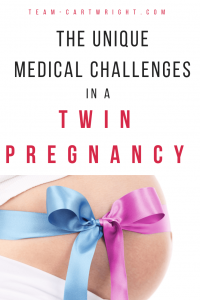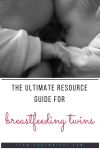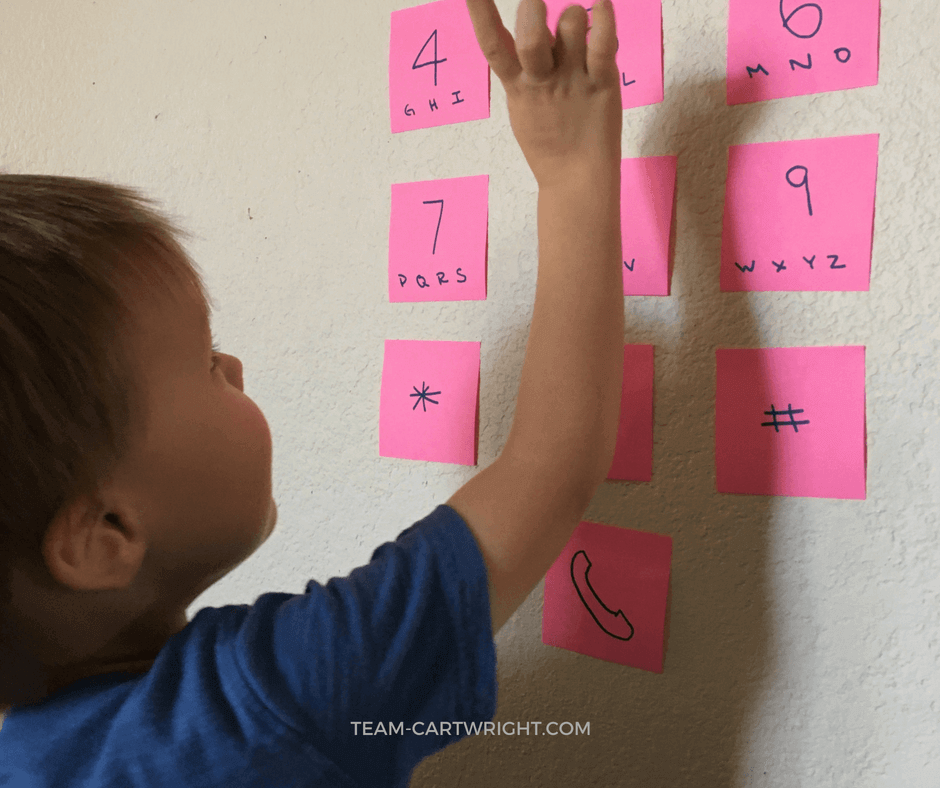Identical Twin Pregnancy Risks
Identical twins are fascinating. Two people who appear to be the same. I know I wondered what it would be like to have an identical twin when I was a kid. So, of course, one of the first things I asked when I found out I was expecting twins, after the shock, of course, was are they identical or fraternal?
Now, twin parents can tell you at the end of the day it doesn’t really matter if your twins are identical or fraternal. Even if they are genetically the same you still have two unique children. But during the pregnancy, it can for sure matter. Identical twins who share a placenta face some unique health concerns. Here are some of the identical twin pregnancy health risks to be aware of, and why you will be monitored frequently.

What's In This Post?
Three Types of Twin Pregnancies
There are three ways you can have twins in your belly. Well, 4 technically with conjoined twins. But those are rare and have their own unique health considerations. I am focused on regular identical twins. Identical twins happen when a single egg splits after fertilization, resulting in two genetically identical babies. Fraternal twins are the result of two eggs being fertilized.
Di/Di Twins
Di/Di stands for dichorionic/diamniotic. This means each baby has a sac and a placenta. They don’t share anything. This happens when the egg splits on days 1-3 after fertilization. Yep, your twins can be identical and not share a thing. There are other ways to tell if your twins are identical. Gender is the first test. Different gender means they are not identical. (No matter how much they look alike!) Different blood types mean your twins are not identical. So if you have di/di twins and suspect they are identical a genetic test is needed. (My friend Caitlin from Twin Mom and More had di/di identical girls. Learn how she discovered they were indeed identical: Identical or Fraternal Twins?)
Mo/Di Twins
Mo/Di stands for monochorionic/diamniotic. This means there is one placenta, but two sacs. The sacs are actually just separated by a membrane. This happens when the egg splits on days 4-7 after fertilization. These twins share a blood supply and all the nutrients that come through the placenta. While they can, of course, bump up against each other, the membrane prevents them from actually touching each other. The only time mo/di twins happen is when they are identical. Note: Di/Di twins can have their placenta fuse and appear as one in an ultrasound. Once your twins are born your doctor will be able to tell if it is indeed one placenta or two that have fused. (Ali and Sammy are mo/di identical twins. If you are looking for a positive birth story read about their birth: A Complication Free Twin Birth)
Mo/Mo Twins
Mo/Mo stands for monochorionic/monoamniotic. This means one placenta and one sac. This happens when the egg splits on days 8-10. These twins share a blood supply and all the nutrients that come through the placenta. They can also touch each other and each other’s umbilical cords. While this seems like a really cool way to have twins, it is one of the most dangerous. The only way to have mo/mo twins is to have identical twins.

What Makes Identical Twin Pregnancies Riskier?
All twin pregnancies are high risk. You have two babies in there and that is just by nature a higher risk. But identical twins have more risks. Identical twins that share a placenta have some specific risks that need to be watched for.
One Placenta
Having only one placenta means the twins share a blood supply and nutrition supply. One problem that can arise is that the placenta has to work harder, as it is working for two babies. The placenta is a temporary organ that is formed during pregnancy. It isn’t designed to last forever, and with double the stress on it the placenta can wear out faster. You can also have an unequal distribution of resources between the two umbilical cords.
Identical Twin Pregnancy Risks
If you are expecting mo/mo or mo/di twins there are some conditions that you should be aware. This, of course, does not mean they will occur. Ali and Sammy didn’t have any issues, despite being mo/di twins. But you will be monitored for them as it is important to catch anything early. This list is purely for information purposes, please talk to your doctor about any medical concerns you have with your twins.
Intrauterine Growth Restriction
Intrauterine growth restriction (IUGR) is when one or both babies have an estimated fetal weight of less than 10% on the growth scales. This means out of 100 babies they are smaller than 90 of them. The risk of IUGR means that as you progress through your pregnancy you will have more frequent ultrasounds to monitor the growth rate of both babies. While IUGR is not reversible, early detection can help with treatment and a good future prognosis.
Oligohydramnios/Polyhydramnios
These are big words that mean the volume of amniotic fluid is off. Oligo is too little fluid and poly is too much. This happens if there is too much or too little blood supply to the baby. With a shared placenta, you can have unequal blood flow to your twins, and this impacts the amount of amniotic fluid created. Having too much or too little amniotic fluid can cause problems for the babies. There are some treatments available for these conditions and your doctor will determine a course of treatment if needed.
Twin To Twin Syndrome
While IUGR and amniotic fluid level problems are not unique to twins, Twin to Twin Syndrome (TTTS) is. In TTTS one twin gets more blood flow than the other. It can actually cause problems for both babies, not just the one that is getting less blood. There are some treatments available for this condition. Again, your doctor will have to decide what is best for your particular situation.
Twin Reversed Arterial Perfusion Sequence
Twin Reversed Arterial Perfusion Sequence (TRAPS) is another complication unique to shared placenta twins. In TRAPS one twin develops normally while the other has a malfunctioning heart. What kind of happens is that they healthy twin’s heart ends up working overtime on both twins. This puts both twins at risk as one has a heart that isn’t working right and the other has one that is overworking, which can be just as damaging. Fortunately, there are treatments for this as well but left untreated it can be very serious.
Mo/Mo Complications
Twins that share an amniotic sac have the additional complication of being able to touch one another. This means the umbilical cords can be tangled around each other or the babies. There is also the chance for one baby to basically grab the other baby’s cord. Babies can all touch their own umbilical cords, and they can grab and hold onto them. When this happens it can restrict blood flow to the baby. However, when this happens the loss of blood flow causes the baby to relax their grip. Think of it like this. If you hold your breath you will eventually pass out and start breathing again. Same idea. But if one baby grabs the other’s cord there is no reflexive fail safe to let go. So mo/mo pregnancies have additional monitoring to make sure the umbilical cords are doing well.
Why Worry About These Conditions?
This can be overwhelming and intimidating information. What is the point of knowing all this? I am not trying to spread gloom and doom. There are so many twins born that never have any of these issues. (Ali and Sammy are a great example!) But when you have a single placenta twin pregnancy you will have a different level of care. This can be confusing when you are told your pregnancy is healthy, yet you have to make extra appointments and have extra monitoring.
Additional Monitoring
The first half of my pregnancy was basically the same as my singleton pregnancy. But as it progressed more and more ultrasound appointments were added, and these were done with a maternal fetal medicine (MFM) specialist.
What is Maternal Fetal Medicine?
Even without other risk factors, you will probably be referred to an MFM specialist. These doctors specialize in high-risk pregnancies and as such have more experience with single placenta twin pregnancies than your normal OB. The MFM will monitor your baby and help make recommendations on delivery plans. Making appointments with two doctors can be frustrating, but think of it this way. Your OB is your doctor. Yes, they care about the health of your babies. But they are looking at you as a mother. The MFM is the doctor for your babies. Her job is to focus in more on how your twins are developing. Yes, both doctors care about all three of you. They just look at the pregnancy from different sides. This is good because there is a lot to keep track of!
What Do These Potential Risks Mean?
Overall, plan for a lot of doctor appointments. Starting at the end of my 5th month I started seeing the MFM and my OB more regularly. Along with my normal monthly OB appointments I had ultrasounds every other week. One would be just a fluid check on the babies, so these were short. The other would be full measurements of both babies. This monitoring helps doctors recognize if any of the above conditions are present. Babies develop quickly, so your babies need to be seen frequently. Early detection is key in every single condition listed.
Nonstress Test
Another test you will probably experience quickly is the Nonstress Test (NST). This one is really easy. You sit back on a chair and they put monitors on your belly, one for each belly. You will also have another belt to monitor for contractions. (Your belly gets full fast with three belts on.) As they monitor your baby you will be given a button to click every time you feel a baby move. What they are checking is that the babies’ heart rates are increasing and decreasing as they move. The frequency of this test, of course, varies from pregnancy to pregnancy, but it will increase as you get closer and closer to your due date.

What Does This Mean as a Twin Mom?
What does all this mean? You will get a lot of ultrasounds. Like a whole lot. That sounds super fun when you are early in your pregnancy. Who doesn’t want to see their babies more? I remember with Ben being sad after the 20-week ultrasound because that was the last one. With Ali and Sammy, well, I got over it.
To be totally honest, ultrasounds stopped being a thrill. Don’t get me wrong, I loved seeing my girls. But every appointment meant time off work. Ben was only 2 when this was going on. I was able to take him to some appointments, but not all. The fluid checks were relatively quick, so I would take him to those. But the growth checks took longer, meaning it was easier if I could get childcare for him.
Nonstress tests are nice, you have an excuse to just sit back and relax. The downside is you have to hold still. My tests were done in a room with a lot of equipment. That means a lot of buttons. Having to hold still in a room with a lot of expensive buttons? Yeah, I couldn’t take Ben to those. Fortunately, my mom was able to watch Ben so I could have the tests done.
Understanding the Why
Like I said, I am not sharing this information to scare soon to be twin moms. But when you are told that your pregnancy is healthy and everyone is fine it is hard to understand why you still need to take the time to go to all these appointments. Well, this is why. These risks are very real. Taking the time to follow through with all the appointments your doctor recommends is important.

It’s Worth All the Risks
Twin pregnancies can be challenging. Even in a boring one like mine there is a lot to keep track of. But I found it really helpful to have a surface level understanding of why we had to take precautions and do so many checks. I recommend not going too deep if you don’t need to, as it is really easy to freak yourself out. But knowledge is power. Keep in mind most of these risks are very uncommon. Many twin moms make it through their pregnancies with no issues.
You’re carrying some special babies, Mama. Twin moms are made strong. And trust me, having those sweet babies is worth every frustration throughout the pregnancy.

I know no one really likes to think about what can go wrong in pregnancies. But it is dangerous to stick our heads in the sand and pretend it never happens. And when complications hit it is so helpful to find others who have walked the path you are facing. Here are some additional posts that can help moms to be find those who understand what they are going through.
Gestational Diabetes, hypothyroidism, and the MTHFR mutation. Learn how Natasha dealt with these issues in her pregnancy. (And her little girl is healthy and perfect.)
Trisomy 13. This is a tough one. Sometimes in pregnancy you are forced to make tough decisions that no mother wants to make. Katrina has walked this path and felt what you felt. You won’t feel alone when you read her words.
Painful Pregnancies. Pregnancy can hurt. Your body is making entirely new people, of course it isn’t going to be easy! Even if there isn’t anything major wrong, you can still have pain. Here is how Christine handled her painful pregnancy.
Reflux Remedies. Reflux might seem like a minor issue, but when you can’t sleep because you have a fire in your chest it is a big deal. This is a common pregnancy complaint that can show up times two with twins. Valerie has some great solutions to check out.
Adoptions and Medical History. Taking the path of adoption to grow your family doesn’t take away medical concerns from your expecting period. Emily recently went through this and has some insight into how to handle medical history in adoption.

How useful was this post?
Click on a star to rate it!
Let us improve this post!
Tell us how we can improve this post?





